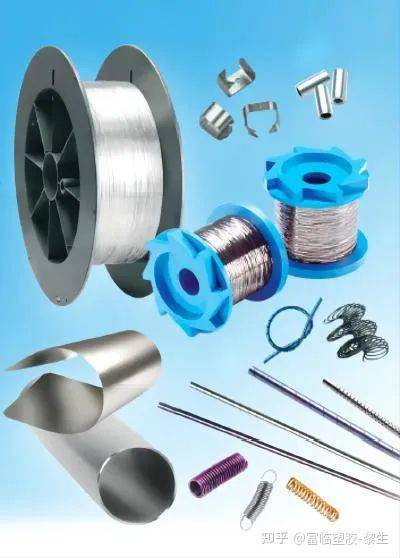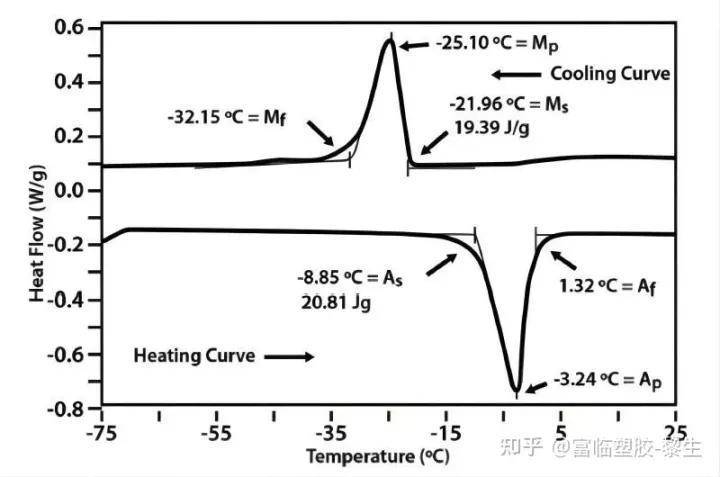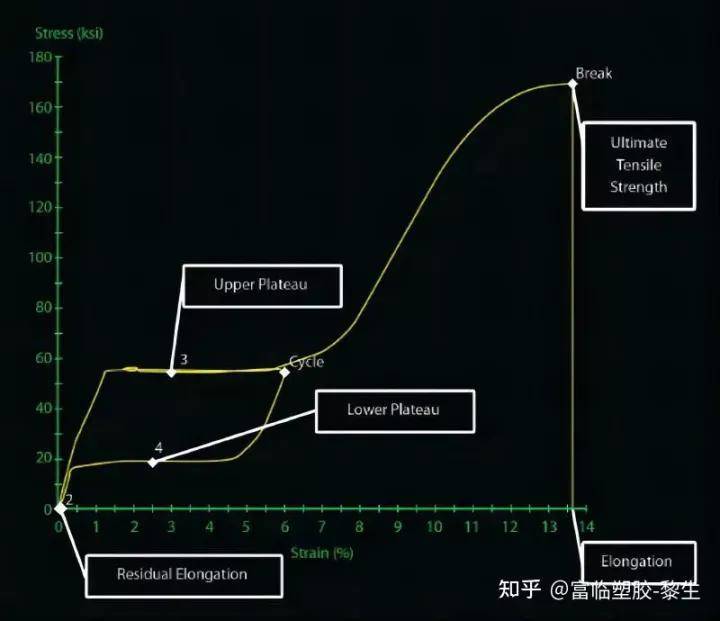Overview of nickel titanium alloys: hyperelasticity and shape memory
2022-11-07 15:31
The world's population was growing, globalization had raised living standards in many countries, and people were living longer. With the improvement of living standards and the choices people make, lifestyle-related diseases, such as cardiovascular disease, are increasing. Companies race to manufacture medical devices to cure challenging physical conditions and diseases. New materials are an integral part of supporting such design and development. One such material is nitinol (NiTi), which William J. Buehler discovered by chance in 1959 during research at the U.S. Naval Ordnance Laboratory in White Oak, Maryland. Nitinol began to be used in medical equipment in the late 1980s, representing the Nitinol Naval Ordnance Laboratory.
Nitinol is one of many shape memory alloys (SMAs) that are able to return to their original shape after deformation. SMAs are used in a variety of applications from consumer appliances to automotive, aerospace, and medical, and gain a strong foothold because they offer designers incredible flexibility to replace traditional materials. Among medical devices, Nitinol is popular for its biocompatibility and hyperelasticity. Nitinol is used in the manufacture of stents, guidewires, stone baskets, filters, needles, dental files and other surgical instruments. (See Figure 1)

Figure 1 - Nitinol components are available in a variety of styles – wire, tube, sheet and foil, as well as machined or formed shapes.
First, the shape memory effect
The most common demonstration of the shape memory effect is that a piece of this metal can be deformed – for example, by winding a straight line into a tight coil – and then the deformation can be completely eliminated by heating the metal in a small amount, such as immersing it in hot water. When it is heated, the metal immediately "remembers" its old shape and bounces back to the form of a straight wire. The shape memory effect occurs when a material undergoes a crystal form change when it is cooled or heated to its characteristic transition temperature. This change in crystal structure in NiTi alloys is from an ordered cubic crystal form above its transition temperature (austenite) to a monoclinic crystal phase below its transition temperature (martensite).
Most commercial applications take advantage of another useful property, its superior elasticity, often referred to as "superelasticity," when one deforms an alloy at temperatures above the transition temperature. Above the transition temperature, the material is in a high temperature or austenitic phase. When stress is applied, deformation causes a stress-induced phase transition from austenite to deformed martensite. When the applied stress is relieved, the material immediately springs back and the crystal form reverts to the austenitic phase.
Most NiTi materials are simple alloys of nickel and titanium, with a ratio of about 50 atoms each (nickel is about 55% by weight). However, a slight adjustment of the ratio of the two elements can make a big difference in the properties of NiTi alloys, especially their transition temperature, which is the temperature at which the crystal structure of the alloy changes from austenite to martensitic or vice versa. If the nickel content exceeds 50/50, the transition temperature drops sharply and the austenite yield strength increases. Increasing the nitinol ratio to 51/49 causes the transition temperature to drop by more than 100°C. The sensitivity of this property to a small increase in nickel percentage makes it difficult to manufacture nitinol with uniform and repeatable properties. However, at the same time, this provides manufacturers with a powerful way to control performance and manufacture ingots with the desired transition temperature.
In fact, the transition temperature is very sensitive to the alloy composition, so chemical methods are not recommended to specify the alloy of interest. Instead, the transition temperature is a more accurate way to specify the alloy. One of the most widely used methods of transition temperature measurement of ingots is the use of differential scanning calorimetry (DSC). ASTM F2004 is the standard for DSC test methods. The type of transition information for a DSC record is shown in Figure 2. Various transition temperatures are marked.

Figure 2 – Various transition temperature measurements of nitinol ingots are recorded with a differential scanning calorimeter (DSC).
While DSC is used to characterize raw materials, the temperature most commonly specified for finished products such as wires or tubes is the Active Austenitic Surface Treatment (Active Af) temperature, which is typically determined by "bend-free" (BFR) testing. In this test, a sample of material is deformed after cooling it into a martensitic region, and then the amount of shape recovery that occurs when heated is recorded. Plots temperature vs. sample displacement to determine the temperature at which shape recovery is complete (Active Af). BFR is a very good functional test that shows significant shape recovery. ASTM F2082 is the standard for BFR test methods. In most applications, specifying the transition temperature of the final product (Active Af) is sufficient. However, if desired, the transition temperature of the original ingot can also be specified.
Superelastic NiTi alloys utilize stress-induced martensitic transitions to achieve incredible flexibility and kink resistance. For example, alloys designed to be superelastic at room temperature are often produced at slightly lower than room temperature at their active Af temperature, for example in the range of 0 to 20°C. This material will also exhibit good superelasticity at body temperature (37°C). Superelastic alloys make up the largest volume of nitinol material.
形状记忆 NiTi 合金利用材料在加热到其转变温度以上时恢复训练形状的能力。因此,要指定的最关键特性是转变温度。活性 Af 表示加热时从马氏体转变为奥氏体的完成,因此表示形状恢复完成的温度。
ASTM F2516 是镍钛合金拉伸试验的主导标准。在典型的拉伸试验中,样品被拉至 6% 的应变,然后卸载并随后被拉至破坏。除了其他材料常见的极限抗拉强度和伸长率外,在测试镍钛合金时还需要测量其他关键参数。当测试在样品的活性 Af 以上进行时,还记录上平台强度、下平台强度和残余伸长率(或永久变形)。由于材料经受循环试验,在加载过程中,材料从奥氏体转变为应力诱发马氏体,当样品卸载时,材料反转为奥氏体。上平台是在拉伸加载期间记录的 3% 应变下的应力,下平台是在样品卸载时记录的 2.5% 应变下的应力。残余伸长率是加载到 6% 应变和卸载完成后的应变。图 3 描述了这些点。

图 3 – 典型的镍钛合金拉伸测试。除了其他材料常见的极限抗拉强度和伸长率外,在测试镍钛诺时,还需要测量其他关键参数。上平台强度、下平台强度和残余伸长率(或永久变形)也被记录下来。
二、加工
镍钛诺锭使用真空感应熔炼和/或真空电弧重熔的组合来熔化。钢坯经过锻造和热轧以形成中间形式,这些中间形式进一步制成棒材、卷材和板材。ASTM F2063 是涵盖此类轧机形式的锻造镍钛的化学和冶金要求的标准。进一步拉制线圈以制造更小直径的线材,并将板卷下以制造更薄的片材。用枪对棒材钻孔以形成“空心管”,然后将其拉成管状。枪钻是一种必要的邪恶。它会立即降低该过程的有效产量,因为它会去除大量无法回收的材料——想想棒材重量与管材空心重量。
由于会形成氧化钛和碳化物,因此控制熔体中的氧和碳含量至关重要。这些硬夹杂物充当基质中的不连续性。这些已成为有关设备故障和疲劳强度的众多研究的主题。
冷加工和热处理(热机械加工)的结合对于在材料中获得所需的性能至关重要。在冷加工制造操作(例如拉拔或轧制)期间,镍钛诺合金的加工硬化速度非常快。如果材料在经过一定量的冷加工后没有退火,强度会上升到进一步变形时达到断裂强度的程度,并发生破坏。
热处理也用于设定镍钛诺组件的最终形状。如果镍钛诺有合理的冷加工量(大约 30% 或更多),400° 到 500°C 的温度和适当的停留时间将产生一个直的、扁平的或成型的零件。术语“形状设置”通常用于此过程,成型零件是使用定制夹具创建的。一些常见的热处理方法是钢绞线退火(用于直线和管材)、箱式炉、熔盐浴和流化床。热处理的另一个目的是确定镍钛诺组件的最终机械性能和转变温度。材料经过冷加工后,适当的热处理将在材料中建立可能的最佳形状记忆或超弹性性能,同时保留足够的残余冷加工效果以抵抗循环过程中的永久变形。它还有助于设置部件的 Active Af。
镍钛诺管、片材和线材要经过各种加工操作才能制造出器件。镍钛诺对无心磨削等研磨技术的材料去除反应良好,但难以通过铣削或车削加工。激光和放电加工是管材的常用切割方法。此外,片材还可以进行水射流切割或光化学加工。
三、应用
镍钛合金管最广为人知的应用是通过激光切割制造自膨胀支架。它是外周血管应用的热门选择。管内径的同心度控制和良好的表面光洁度是制造支架时获得良好成品率的关键。镍钛诺管还用于活检、内窥镜检查和骨科等应用。
镍钛诺导丝用于将导管引导到难以到达的身体部位。与不锈钢不同,它们是有利的,因为它们具有抗扭结性。金属丝是有弹性的,它可以在体内沿着曲折的路径前进而不会损坏。镍钛诺将平稳旋转并传递扭矩。镍钛诺丝也常用于制造编织支架和过滤器。
镍钛诺板很受欢迎,因为它提供了其他形式所不具备的设计灵活性——将产品设计成平面,然后将其成型以制造设备。可以生产具有非常严格的厚度公差和整个表面的均匀厚度控制的板材。这种高工艺能力有利于下游工艺优化和自动化——一致的起始板材厚度、受控的后处理将产生可预测的最终尺寸。
镍钛诺的一个缺点是它不是不透射线的,这是正确放置支架或将设备定位在体内的能力的要求。由贵金属(如铂和钯)制成的各种标记系统通常与基于镍钛诺的设备结合使用,以提高辐射不透性。
Next page:
Related News
Contact Us
Telephone:86-0755-84264858
Mobile:13823613867 13418804292
Fax: 0755-84263124
Address: No. 22-1 Youganyuan Road, Anliang Community, Yuanshan Street, Longgang District, Shenzhen






